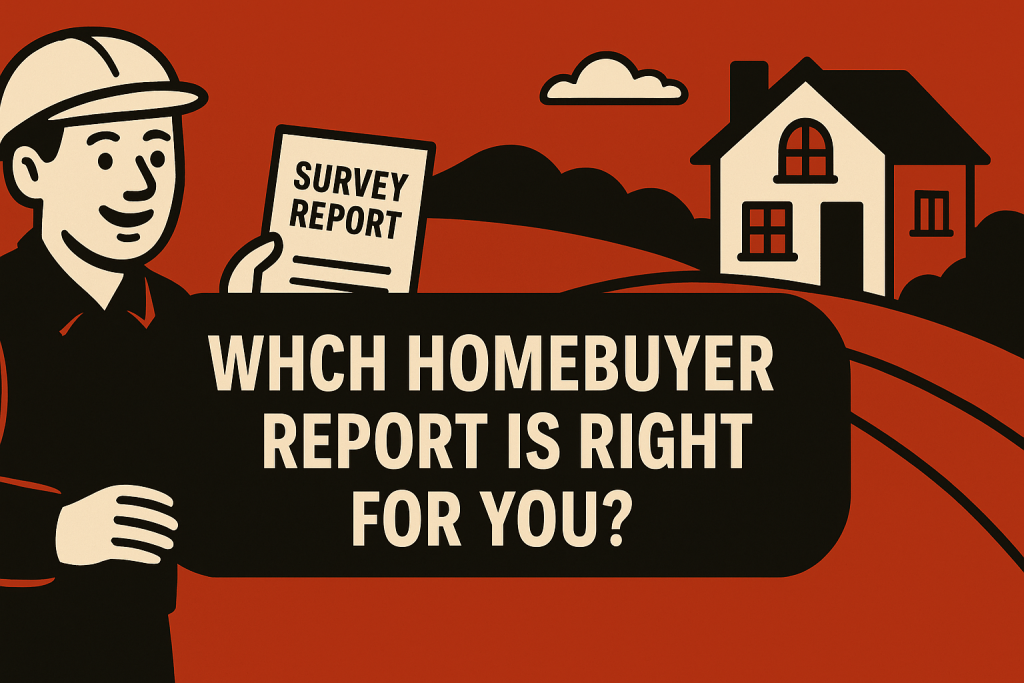When buying a property in the UK, choosing the right RICS Home Survey is a critical decision that can significantly impact your understanding of the property’s condition and your financial security. The two most common options are the RICS Home Survey Level 2 (often known as a HomeBuyer Survey) and the RICS Home Survey Level 3 (also called a Building Survey). While both are conducted by qualified RICS Chartered Surveyors, they offer distinct levels of detail and are suited to different types of properties. Understanding these differences is key to making an informed choice.
Understanding the Core Differences
Scope of Inspection: Visual vs. Comprehensive
RICS Home Survey Level 2: Involves a detailed visual inspection of accessible areas. The surveyor looks for obvious defects and issues that could affect the property’s value, but generally does not include moving heavy furniture, lifting carpets, or extensive checks of concealed areas. Services are observed visually without testing.
RICS Home Survey Level 3: The most comprehensive survey available, with a detailed visual inspection of the building, its services, and the grounds. The surveyor will lift loose carpets, thoroughly inspect roof spaces, and assess under-floor areas where it is safe and reasonable to do so, including any normally occupied or accessible concealed areas.
Depth of Detail and Reporting
RICS Home Survey Level 2: Provides a clear and concise report, often using a traffic-light condition rating (1, 2, or 3) to highlight the state of various elements. It identifies potential problems and offers advice on necessary repairs and maintenance, but typically does not include specific cost estimates for those repairs.
RICS Home Survey Level 3: Offers an in-depth structural assessment. The report includes detailed descriptions of defects, outlines remedial options, discusses future maintenance issues, and often provides indicative cost estimates for necessary repairs. It also delves into the construction materials used throughout the building.
Report Format and Recommendations
Both reports are designed to be user-friendly, but the Level 3 report provides far more granular information, making it suitable for complex situations. While the Level 2 report focuses on key defects and general recommendations, the Level 3 report delivers comprehensive structural investigations and detailed advice on repair options, including timescales and costs.
When to Choose a RICS Home Survey Level 2
Ideal Property Types
- Standard properties in reasonable condition
- Relatively modern homes (typically built within the last 150 years)
- Properties similar to their original construction, without major alterations or extensions
- Homes built with standard materials
What It Identifies
A Level 2 survey is designed to pinpoint issues that could affect the property’s value, offering advice on repairs and maintenance. It highlights urgent defects, flags any legal issues for solicitors, and includes basic structural checks and damp tests.
Optional Add-Ons
You can add a market valuation and an insurance rebuild cost to a Level 2 survey for additional financial insights.
When a RICS Home Survey Level 3 Is Essential
Properties Requiring Deeper Insight
- Older properties (over 50 years old) or particularly historic homes
- Buildings of unusual construction or materials
- Homes with significant alterations or extensions
- Properties in poor repair or that appear run-down
- Very large or luxury properties, including listed buildings
Structural Concerns and Renovation Plans
If you have specific structural worries or you’re planning major renovations or extensions, a Level 3 survey is crucial. It provides a thorough evaluation of issues like subsidence, damp, or roof defects, and delivers detailed repair recommendations. It can also assess the building’s suitability for planned changes.
The Value of Comprehensive Advice
Though a Level 3 survey is more expensive, its detailed assessment and cost estimates can be invaluable. You’ll gain a complete understanding of what you’re buying, helping you avoid unforeseen expenses and potentially strengthening your position in price negotiations.
Choosing the correct survey level is a strategic investment in your property’s future. Align the depth of assessment with the complexity and risk profile of the home you intend to purchase. To discuss which RICS Home Survey is right for your prospective property and connect with a qualified expert, visit RICS Survey Experts today for tailored advice and peace of mind.Survey is right for your prospective property and to connect with a qualified expert, visit RICS Survey Experts today. Their chartered surveyors can provide tailored advice to ensure your peace of mind.
| Feature | Level 2 (HomeBuyer Survey) |
Level 3 (Building Survey) |
|---|---|---|
| Property Suitability | Standard, modern (post-1930), good condition | Older, unusual, altered, poor condition, listed |
| Inspection Depth | Detailed visual, accessible areas, basic structural checks | Comprehensive visual + some intrusive (e.g., lifting carpets, thorough roof space inspection) |
| Report Content | Clear, concise, “traffic light” ratings, general repair advice | In-depth structural assessment, detailed defects, remedial options, future maintenance |
| Cost Estimates for Repairs | No (typically) | Yes (often indicative costs) |
| Renovation Suitability | No (not designed for major renovations) | Yes (highly suitable for renovation projects) |
| Focus | Key defects affecting value, general condition | Structural integrity, building fabric, long-term issues |
